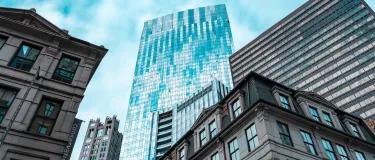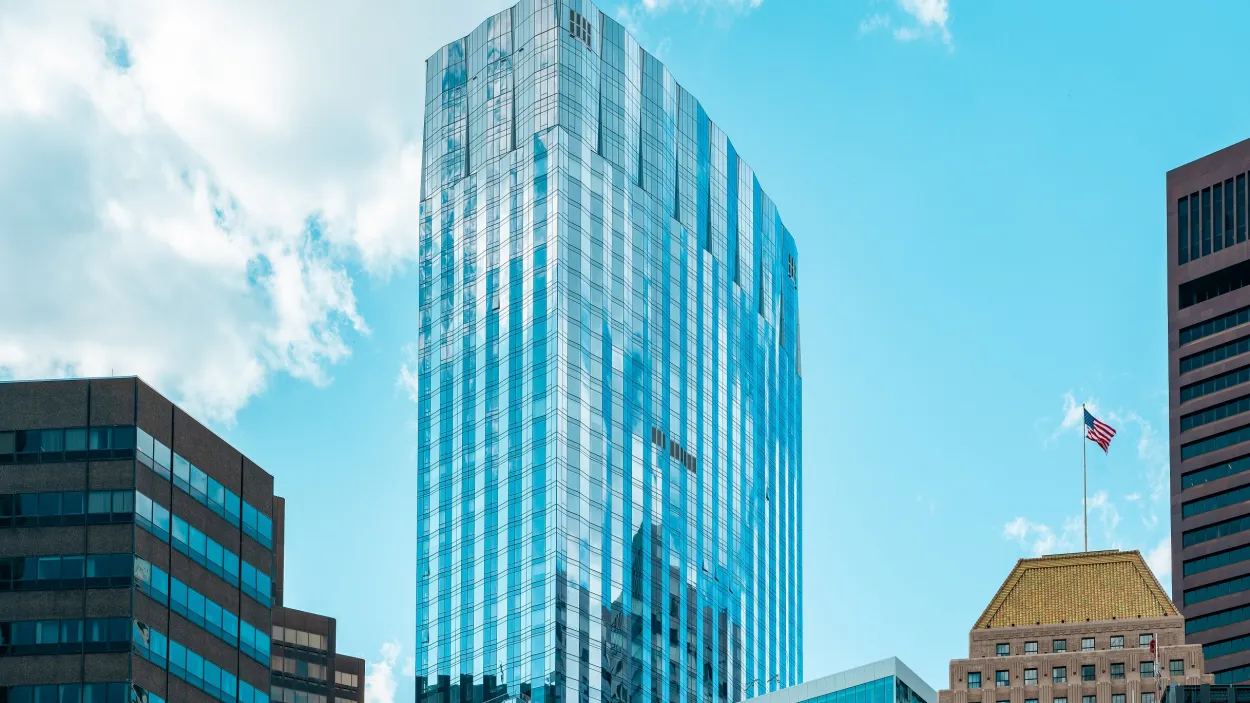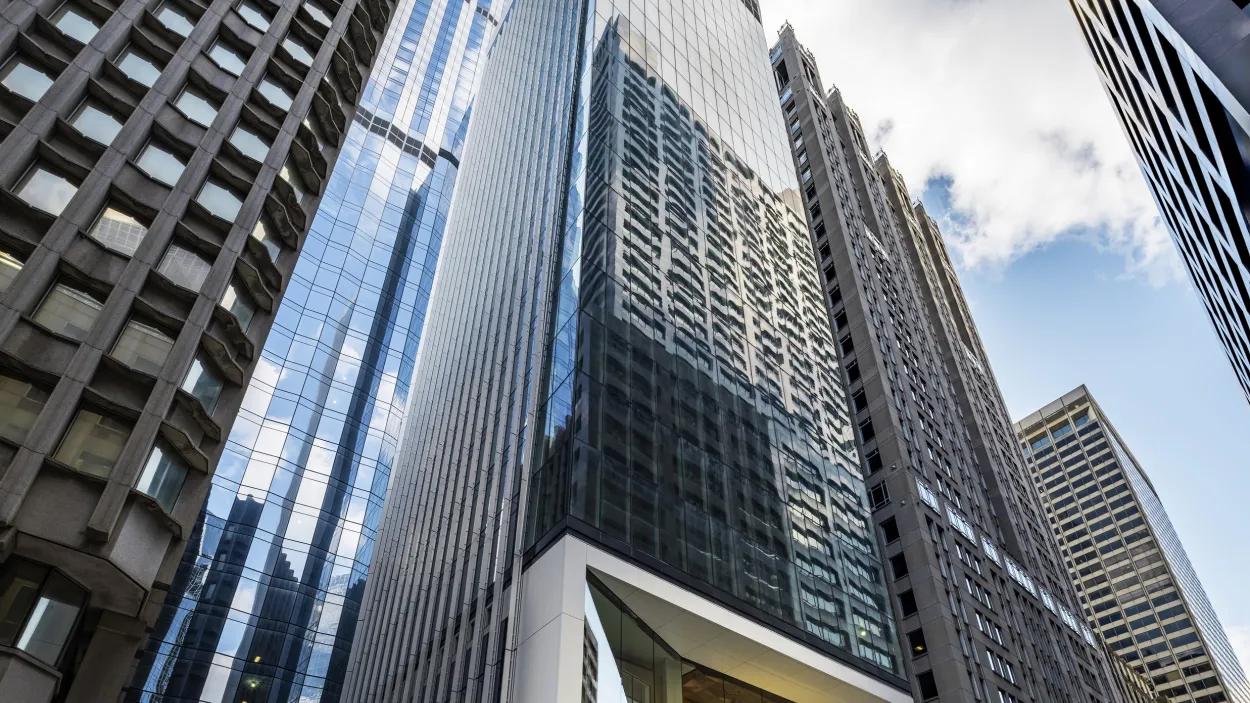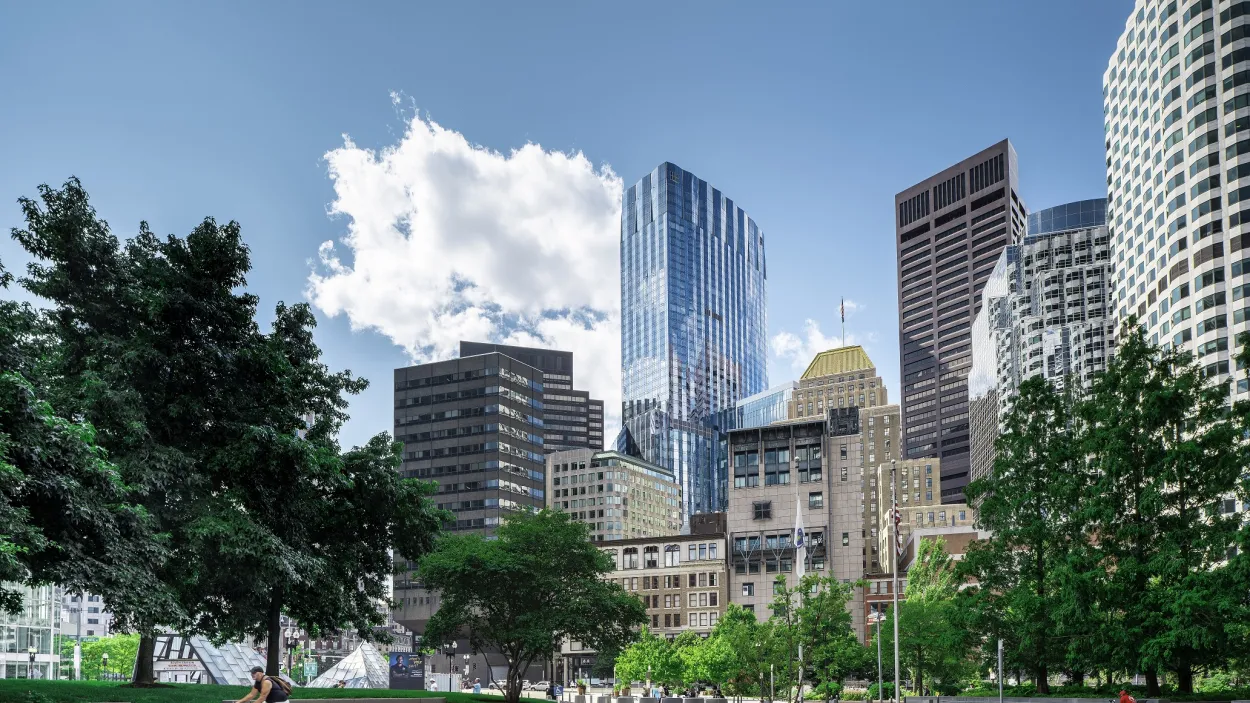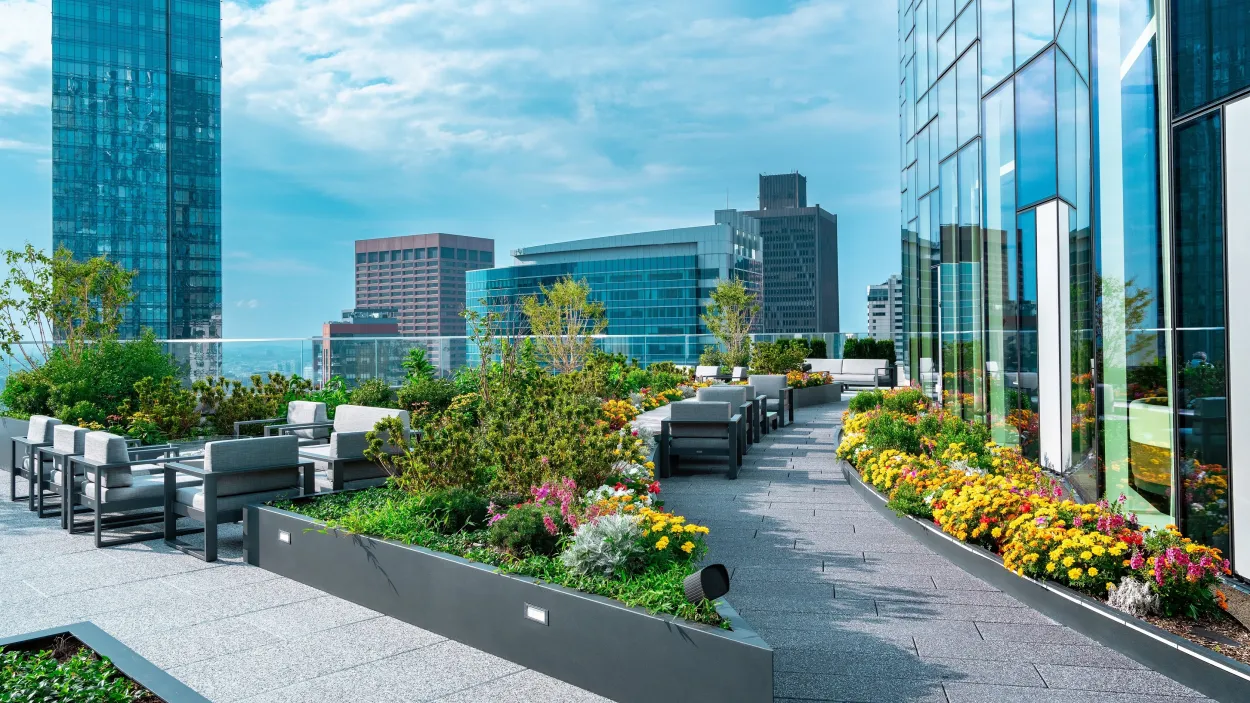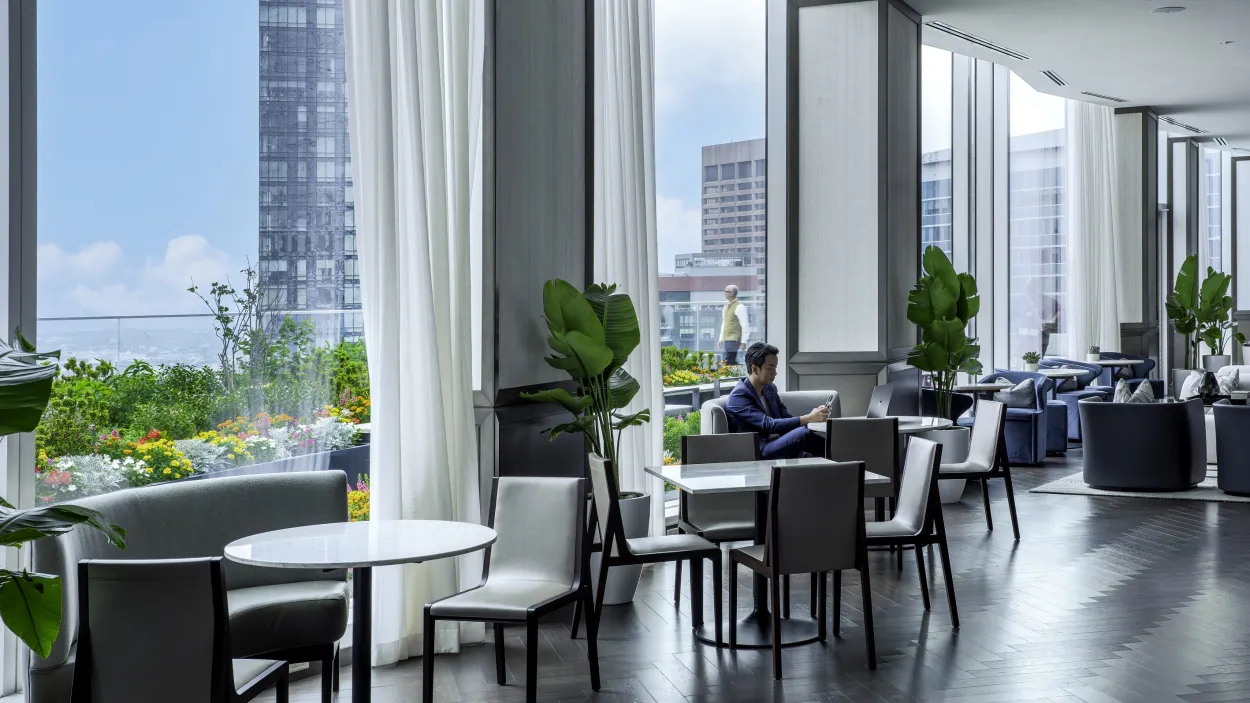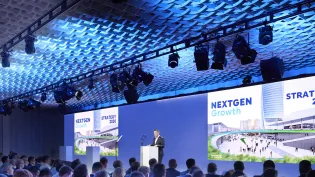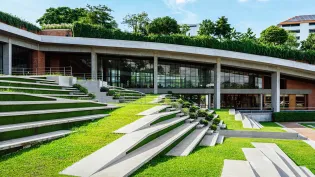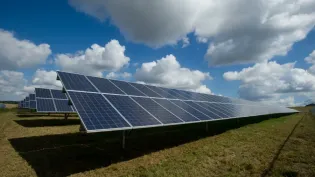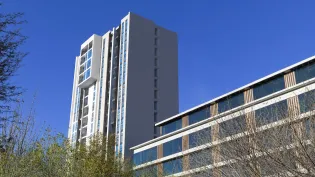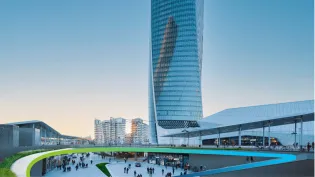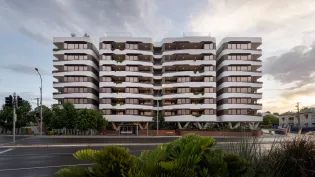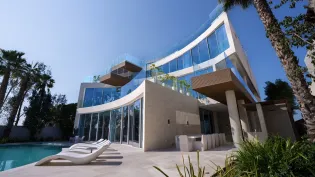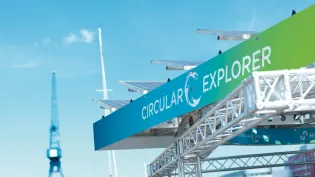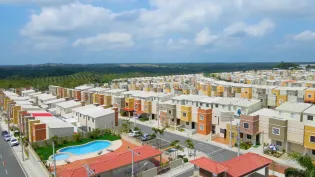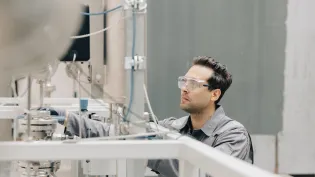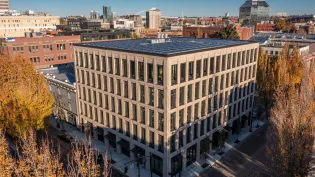Holcim insulation delivers stellar thermal performance for world’s largest ‘passive house’ office building
Driving energy efficiency is one of the main ways we can decarbonize our cities by addressing the operational emissions of buildings. Holcim’s broad range of solutions, from advanced roofing systems and insulation to concrete thermal activation, are making buildings around the world more sustainable in use.
Designed by Handel Architects in collaboration with Steven Winters & Associates, SOCOTEC, and WSP to incorporate Passive House design in its office portion, Winthrop Center in Boston, USA, is the world's largest Passive House-certified office building. Passive House principles encompass various aspects of a building, including its walls, roofs, windows, ventilation, and heat exchange systems, all working in harmony to achieve high levels of energy efficiency.
Holcim contributed to this project by delivering industry-leading roofing and insulation solutions, including Elevate™ UltraPly™ TPO SA membrane and next-generation Elevate™ ISOGARD™ polyiso insulation, used in the roofing system.
Expected to use 65% less energy than the average Boston office building
Holcim’s insulation solutions deliver up to 40% better thermal performance*
World’s largest Passive House-certified office building
*Comparison of thermal drift of previous polyiso products compared with Elevate's ISOGARD formulation. Up to a 40% improvement over competitive products in the market.
The Challenge
Seventy percent of CO2 emissions in the building sector come from building operations, including heating and cooling. We can bring this down by implementing solutions that make buildings more sustainable and energy-efficient in use.
Winthrop Center was conceptualized in 2017 by the internationally recognized developer Millennium Partners as an inspirational workplace environment that would set a new global standard for building performance and energy conservation. Millennium Partners partnered with a group of MIT professors led by the Director of MIT’s Environmental Solutions Initiative, John E. Fernández, to create a holistic design strategy for Winthrop Center that would address health and wellness, boost occupant happiness and productivity, and better the environment. Professor Fernandez advised the team on the building’s design and development, especially as it relates to sustainability in the built environment.
Winthrop Center’s office space was a pilot project for Passive House development, representing the first time a developer applied this approach to an office building of this size and scale. Working closely with the specialized designer, Steven Winters & Associates, and experts at the Passive House Institute in Darmstadt, Germany was essential in bringing the vision to life.
The Solution
Effectively insulating buildings to improve their energy efficiency is one of the main tools we have in our fight against climate change. When it comes to ensuring the highest possible energy efficiency, Millennium Partners chose Elevate™ patented ISOGARD™ polyiso. This rigid foam insulating technology has the highest thermal efficiency per inch delivering a 40% higher performance in cold applications over competitive products in the market. Installed by Titan Roofing, an Elevate Master Contractor, the insulation board was used in the building’s roof.
Typically when the temperature drops, thermal performance of polyiso insulation decreases. ISOGARD™, however, is the only polyiso formulation that becomes more effective as the temperature gets colder.
Elevate™ UltraPly™ TPO SA membrane was also installed to provide a protective, water-proof barrier from driving rain and moisture. Designed for easy installation, UltraPly™ TPO SA can be recycled at the end of life and has zero volatile organic compounds (VOC).
The Result
Winthrop Center boasts 75,000 m2 (812,000 square feet) of Class A office space and 47,000 m2 (510,000 square feet) of residential space, and it is a low-carbon and energy-efficient building. A typical Class A building in Boston’s existing stock uses 150% more energy than Winthrop Center’s office space.
In addition to delivering dramatic energy savings through a well-insulated building façade, air-tight exterior envelope, and advanced energy recovery ventilation (ERV) system, Winthrop Center’s Passive House office space creates a comfortable, healthy indoor environment for building occupants, bringing in 30-50% more fresh air than a standard building of this type.
Holcim’s expertise in creating sustainable building solutions played an important role in this project: on average, up to 25% of a typical building’s heat loss is through the roof. For the rest of the building, Winthrop Center incorporates a well-insulated façade and an air-tight exterior building envelope.
Winthrop Center is unique: It is the most energy-efficient large-scale building ever built in a cold climate, where the Passive House approach is critically important to significantly lower the heating demand in the winter and cooling demand in the summer. As an iconic building that is more sustainable in use than other similarly sized buildings, it stands out as a showcase project for the Passive House industry and sets a high standard for future projects.
The architects involved in the project believe that, in a few years, all buildings will be required to adopt the energy saving principles and achieve the high level of performance of Passive House.
Architects and developers are increasingly looking to Passive House to curb energy use, and Winthrop Center’s recent achievement in being certified by the Germany-based Passive House Institute as the largest Passive House office building in the world is exciting news for the development community, demonstrating that Passive House and its energy saving principles can be applied to an office building at a size and scale that has never been achieved before. Innovative solutions such as Holcim’s are integral to creating a more sustainable future through the built environment and we are proud to have partnered with them in the development of Winthrop Center.
What is a Passive House?
Originally focused on single-family homes in Europe during the early 1990s, the "Passive House" concept has now expanded to encompass various project types.
The office segment of the Winthrop Center project adheres to the international construction standard established and continuously improved by the Germany-based Passive House Institute.
A Passive House is a highly energy-efficient building standard and design approach aimed at reducing a building's energy consumption for heating and cooling to an extremely low level.
The key principles of a Passive House include among others:
- Super Insulation
- Airtight Construction
- High-Performance Windows and Doors
- Heat Recovery Ventilation
- Thermal Bridge Reduction (through multiple adhered layers of insulation)
- Reducing Solar Gain
- Efficient Heating and Cooling Systems
- Energy Monitoring
The primary goal of a Passive House is to create a comfortable, healthy, and energy-efficient living environment while drastically reducing energy consumption for heating and cooling.





